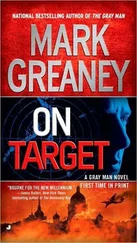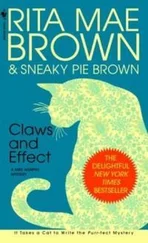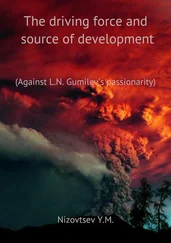That ship sailed to Manila, where the cargo was offloaded and driven away by private vehicles.
This looked like yet another dead end, but the analysts did not give up. They knew a CIA source—none of them were read in on Acrid Herald—had revealed the equipment was due to arrive in the next few days, so they began working the equation from the other direction, looking at shipping heading to North Korea. An Indonesian-flagged cargo ship, the San Fernando Chieftain , had begun a voyage in Marseille that would terminate in North Korea. On its way it made several ports of call, and one of those ports was Manila, just six days earlier.
The entire team began working on digging into the cargo on board, and within a short time they learned four forty-five-foot high-cube shipping containers from Malaysia, categorized only as machinery, had been placed on the manifest in the port of Manila. And the San Fernando Chieftain was now just thirty hours from arriving in the territorial waters of North Korea.
The economic forensics team delivered their findings up the chain, and they moved on to something else the next day, wholly unaware of the importance of the matter, or the full scope of their contribution.
—
When Mary Pat Foley received the news, she realized she had all the information she needed, but that in itself solved nothing. Finding evidence that a ship heading to North Korea contained particular items, if those items were not bound by sanction restrictions, did nothing to stop the items from reaching North Korea.
Still, Mary Pat decided, the President needed to know that evidence led to the fact that North Korea needed but one more piece of the puzzle to begin production on their cash cow, and that puzzle piece seemed to be just one day away.
She called Arnie Van Damm herself and asked for an immediate slot to see the President. Arnie said he would be in and out of meetings all day preparing for his official visit to Mexico, but he worked her in immediately without protest.
Mary Pat Foley rolled onto the White House grounds fifty minutes later, and she was led into the Oval as she had been hundreds of times. She found the President on the sofa, laughing at something the distinguished-looking man sitting in front of him had just said.
Ryan stood and introduced Foley to Horatio Styles, the U.S. ambassador to Mexico. He explained that Styles was up in Washington just for two days, and then he’d be returning with the President on Air Force One for his official visit.
After the introductions, the ambassador left the Oval Office on his way back to the Department of State. As soon as he was gone Ryan said, “Hell of a guy. He served all over the world as a Marine officer, but he fell in love with Latin America. He retired a colonel, then got his Ph.D. in Latin American studies from Columbia. He’s probably the most capable non-career State Department employee serving as an ambassador. If he spreads his wings a little he’s got the makings of a hell of a secretary of state.”
“Yes, sir,” Mary Pat said, and the President sat back down.
“Okay, you’re not here to listen to me brag about my brilliant ambassadorship nominations. What’s up?”
She told him about the shipload of equipment heading to Chongju, and the fact it was likely the last major component necessary before the refinery became operational.
Ryan listened carefully. His first question did not surprise her in the least. “This comes from our new source at the mine?”
“Partially, yes.” Mary Pat didn’t mention that the President’s own son had provided crucial bits of intel.
—
Jack looked long and hard at his director of national intelligence, trying to read her thoughts. He noted the ambiguity in her answer, and he was used to it. His people shielded him from things. He didn’t much like it, but he understood it.
His mind switched from Mary Pat to the issue at hand. The UN Sanctions Committee refused to vote on increasing the economic sanctions against North Korea that Ryan knew were crucial to choking off the Hermit Kingdom’s access to the hard currency it was using to obtain nuclear missile technology. Ryan had been thinking about what steps he was prepared to take unilaterally. He’d not yet come to a conclusion, but he’d now run out of time to mull it over.
He had to act.
“Mary Pat, from what we’ve learned in the past month, the evidence is clear, and it all points to the fact this Chongju facility is serving as a funding vehicle for North Korea’s nuclear weapons program. I am going to go to the National Security Council and authorize a Presidential Directive stating the Chongju mineral mine and processing facility in North Korea represents a clear and present danger to the security of the United States, and I will direct that our military, intelligence, and diplomatic efforts be engaged in keeping that facility from going into full production.”
He added, “I’m not going to attack it, that would just send North Korean artillery and missiles raining down on Seoul, but I am damn well going to do everything short of that.”
Mary Pat had rarely seen her President more resolute. “Yes, sir. Please be aware, though, that if you want the Navy to interdict that ship, they will have to do it within twenty-four hours, or it will be in North Korean waters.”
Ryan nodded. “I understand. I’m going to call Burgess right now and tell him about the directive. By the time he gets forces in position to stop that boat, the paper will be signed.” Ryan rubbed his nose under his eyeglasses. “We’ll take heat for it, but it needs to happen.”
—
Mary Pat left the Oval minutes later. She had work to do. Perhaps less than the National Security Council, because they had just hours to draw up a Presidential Directive for POTUS to sign. But once this was done, Mary Pat knew the gloves were off. A Presidential Directive carried the full force and effect of law, and with it in place she and her counterparts in the Defense Department and the State Department would be directed to do whatever they could to see that the Chongju mine earned no more money for the North Korean nuclear weapons program.
And even though the battle would be fought in a coordinated fashion by the combined power of the entire United States government, the director of national intelligence was keenly aware that at the very tip of the spear in this endeavor was a young man in North Korea who was as alone as anyone could possibly be.
52
Dale Herbers of the U.S. Secret Service was a week into his advance in Mexico City before he drove the presidential motorcade route from the airport to the Palacio Nacional. This was by design. He could have run the route earlier in his workup, but he felt his other responsibilities—securing the locations of the various static events of the President’s trip to the city—were better taken care of first, and the motorcade route saved for closer to the actual day of. Things changed on the streets more than they changed in museums, restaurants, government buildings, and other attractions, and Herbers, like most advance-team shift leaders, wanted a game-time feel to the route the President would travel.
The forty-seven-year-old lead special agent and his senior staff of a dozen special agents, as well as several counterparts from various Mexican law enforcement agencies who were working the motorcade, all left Benito Juárez airport just after noon, the exact time of the President’s scheduled arrival in two days. They drove together in a convoy of vehicles on the westerly route toward the Plaza de la Constitución, the massive central square where the palace stood and the President’s motorcade from the airport would terminate.
Читать дальше












